- Category
- Life in Ukraine
The Hunted Midwives of Kherson, On the Run from Russian Drones
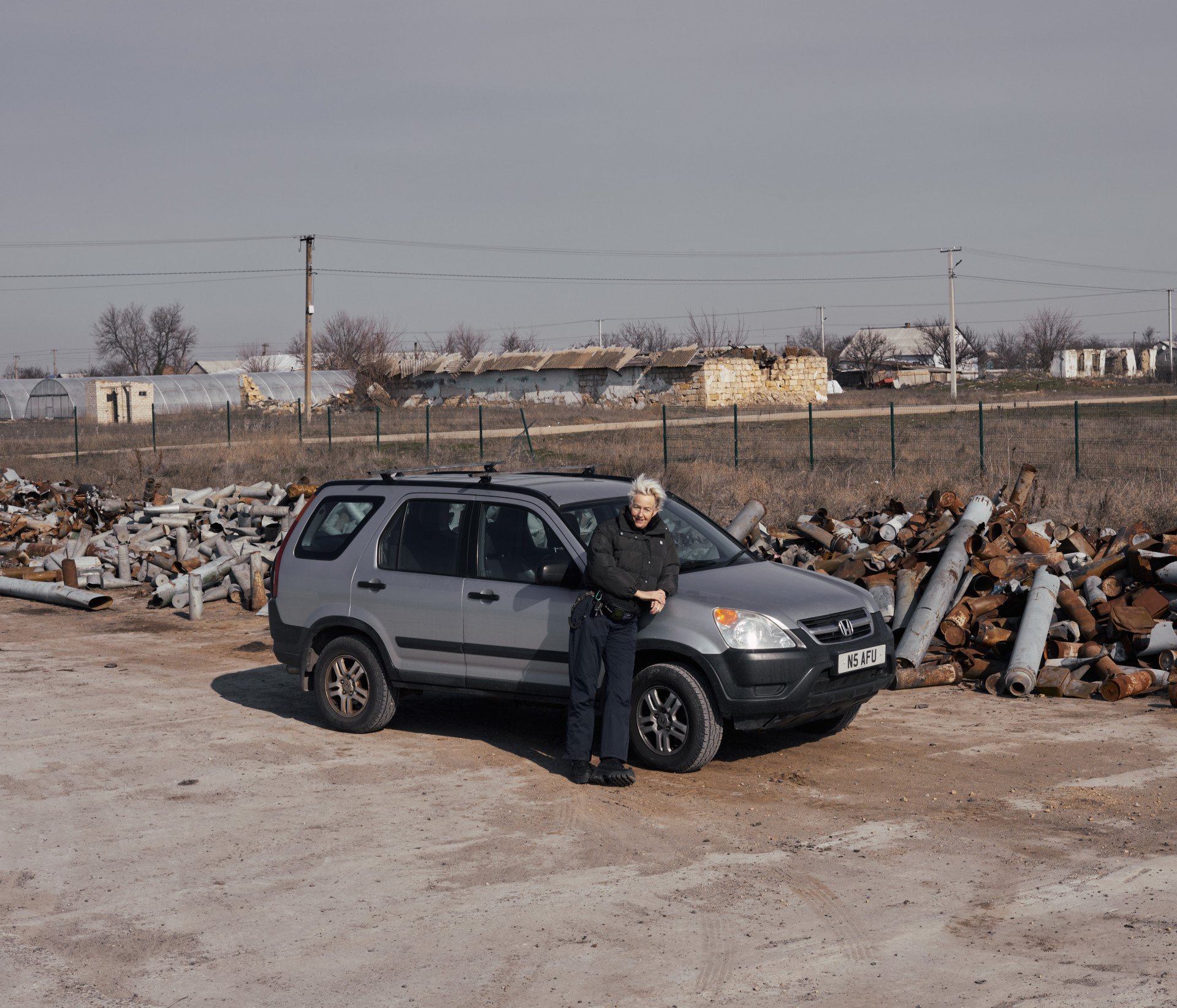
In Kherson, Russian drones hunt civilians in the streets, while underground, Ukrainian midwives help bring life into the world.
A city under siege
In Kherson, FPV drones hunt civilians in what some have called a “Human Safari.” Viral footage shows Russian drones armed with explosives crashing into construction workers on rooftops and chasing down cars. The streets of the city have become a battlefield where locals describe scurrying from building to building “like mice” for safety.
Residents of Kherson have been through a lot—first, eight months of Russian occupation, then near-constant shelling from across the river after the Russian retreat. Now, a new threat has emerged: FPV drones dropping butterfly and other anti-personnel mines on civilian areas, making life nearly untenable. Many who returned after Kherson’s liberation in November 2022 are now fleeing once again.
Who stays behind
While many young people have left, older Ukrainians have stayed in Kherson. The current estimated population of the city is just 73,000, sixty thousand of which are either elderly or disabled. In 2021, before the full-scale invasion, the population was estimated to be around 283,000.
Though the nearby city of Mykolaiv has welcomed Kherson’s residents, many refuse to leave the homes they’ve fought to keep. Among them is Doctor Hnilitsky, the director of a local maternity hospital.
From his office inside the hospital, Hnilitsky points out the window toward the river just a few blocks away—across the water, Russian forces are entrenched.
“If we go to the fifth floor of this building, you can see the other side,” he says. “When the air raid siren goes off, we don’t even have three seconds to get down – the bomb is already here.” The windowsill of his office is lined with sandbags ready to stop shattered glass from a possible explosion.
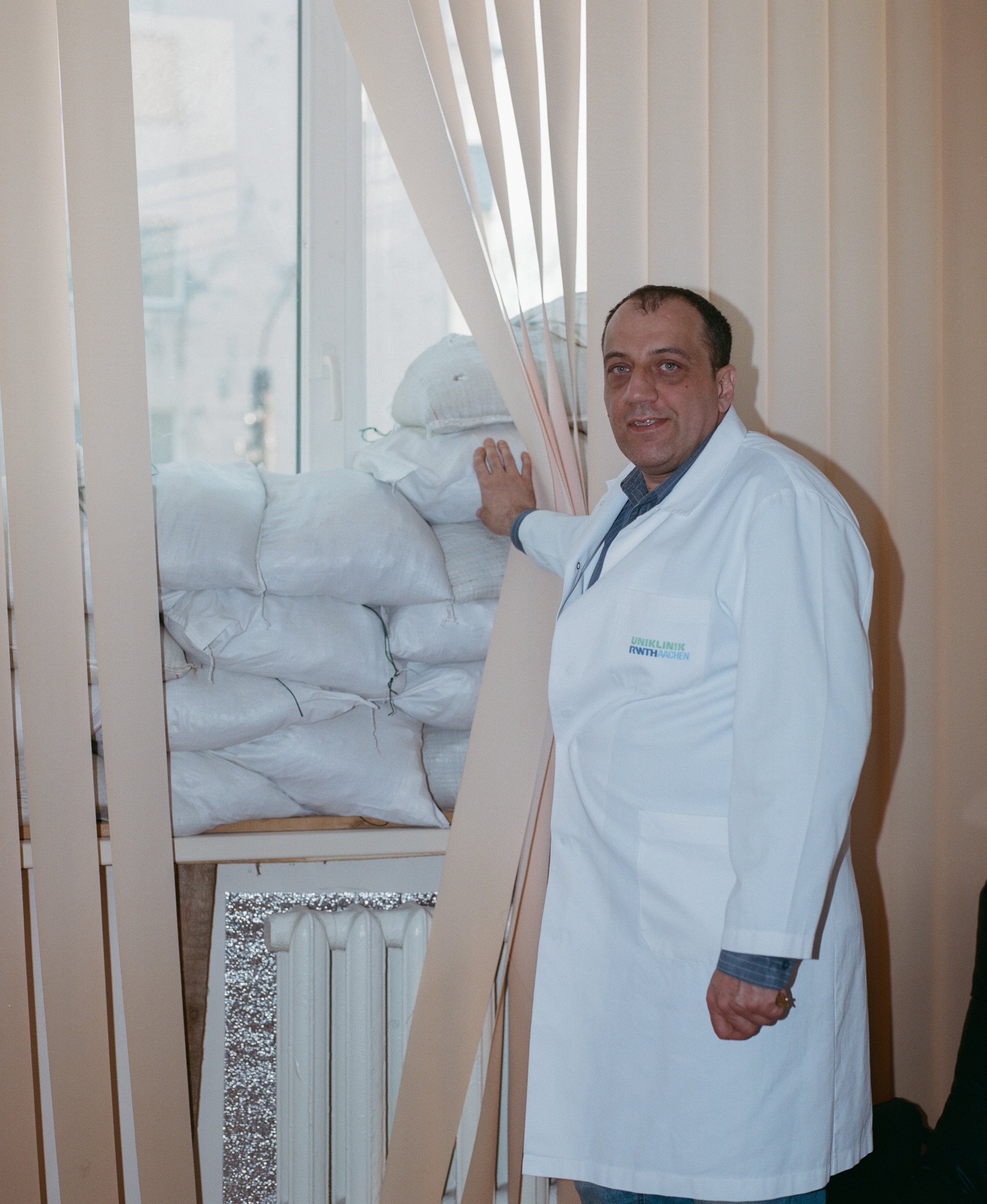
The fifth floor of the hospital that he mentions is no longer inhabitable due to a previous Russian strike, which destroyed the roof and one of the X-Ray rooms. They are currently working to restore it.
Targeting healthcare
Russian strikes on healthcare facilities in Kherson are not an accident but rather a coordinated assault. “There’s another hospital nearby, it’s hit nearly every week,” says Hnilitsky.“They [Russians] know precisely what’s where.”
With the help of EU donations, this maternity hospital has built an underground ward to protect mothers and newborns from Russia’s indiscriminate attacks. The facility is state-of-the-art—comparable to any modern hospital in Europe—but with one key difference: there are no windows, and the doors are as thick as a bank vault’s, built to withstand fire, explosions, or worse.
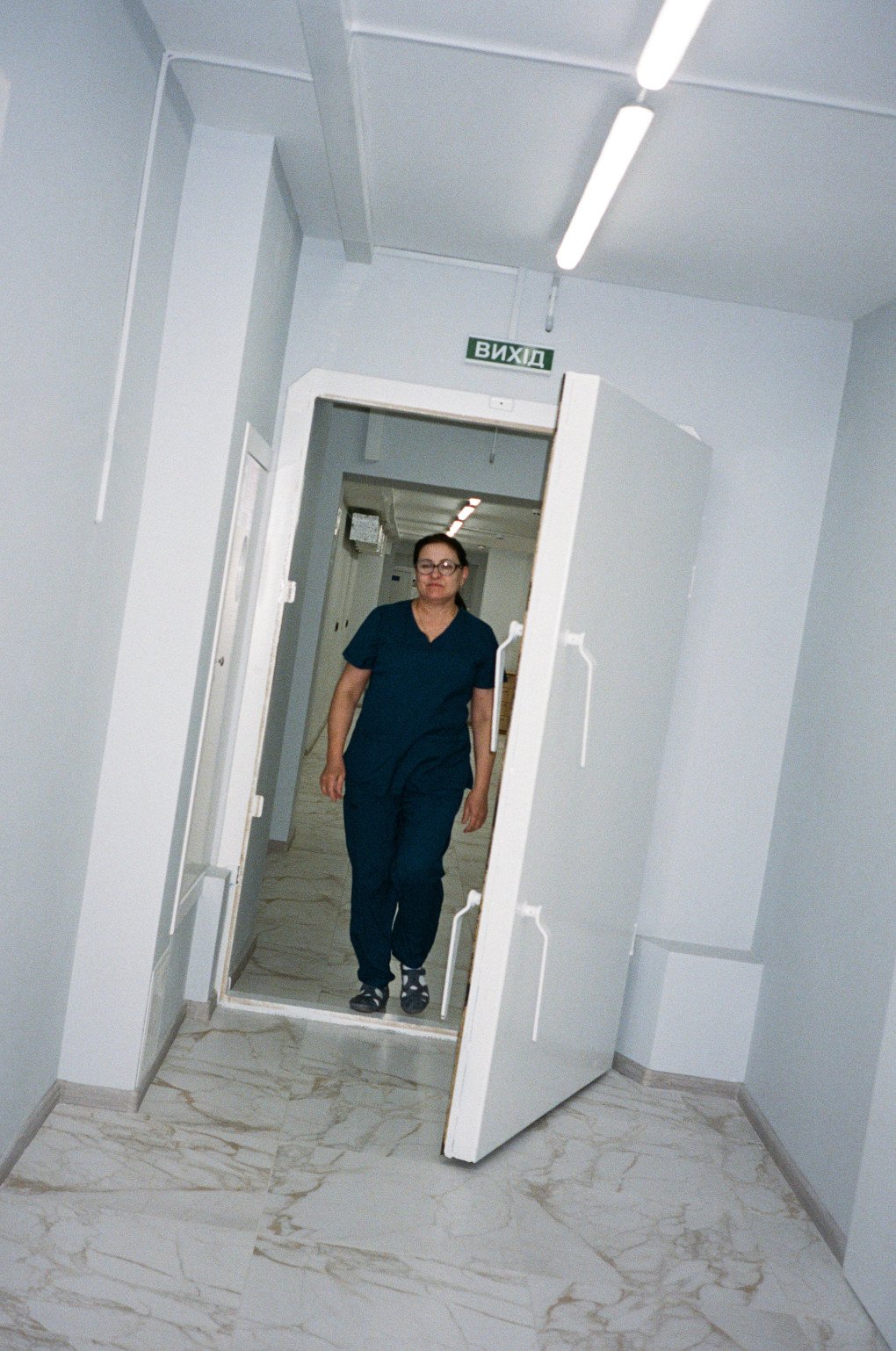
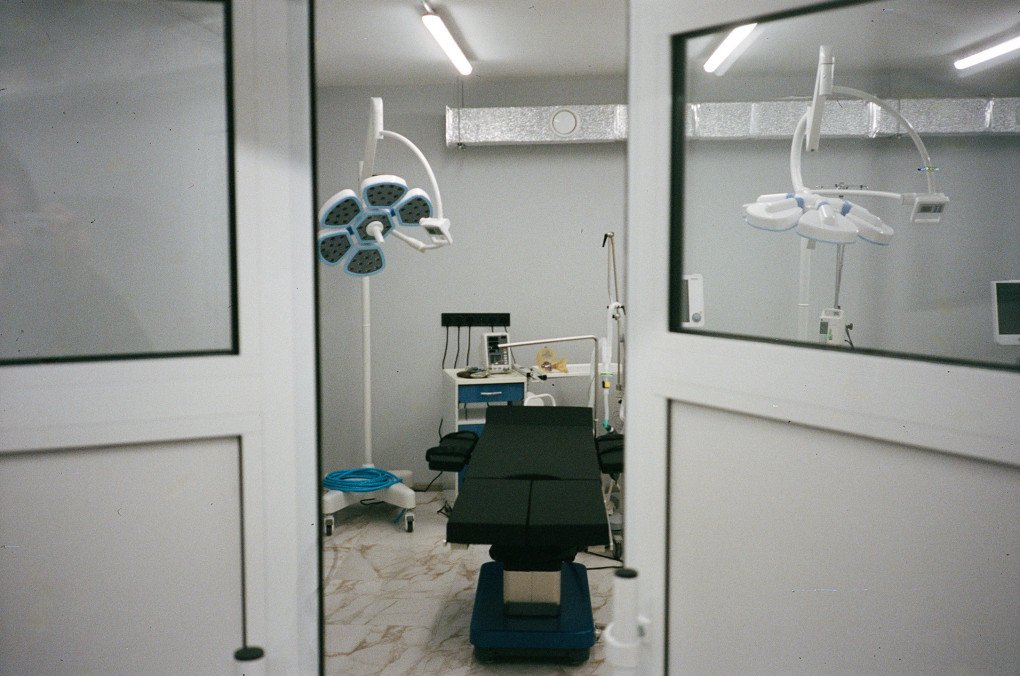
New life in a time of war
In the ward, two mothers sit with their newborn babies. Out of concern for family members still in occupied territory, they’ve asked to remain anonymous. One of the mothers, who is 32 years old, says she had the option to give birth in Mykolaiv—but chose to stay and deliver in her hometown of Kherson.
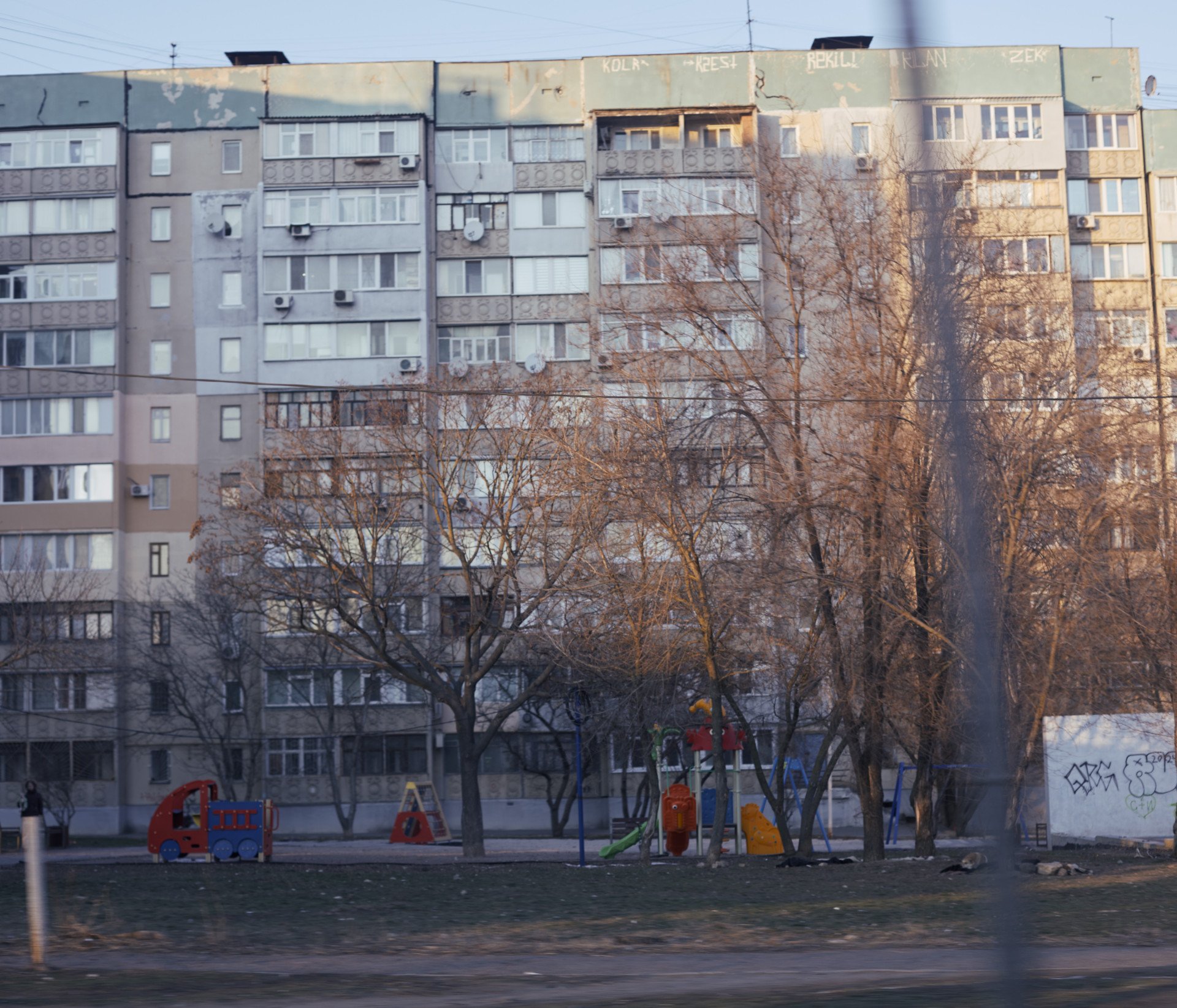
“I believe it’s a mix of true patriotism and a strong sense of duty. These aren’t people who leave easily,” says Hnilitsky when asked why mothers choose to stay in Kherson. He himself was trapped in occupied Ukraine when the Russians invaded—and made a heroic journey back, a near-impossible feat. “I returned through Georgia, Slovakia, and Bulgaria, back into Ukraine. I knew exactly what I was coming back for. Not everyone does.”
I’ve lived on both sides [Ukraine and occupied Ukraine]. I’ve stayed, I’ve helped. Even if others run, I will remain in Ukraine.
Doctor Evgen Hnilitsky
Hospital Director
Like many Western nations, Ukraine has seen plummeting birth rates since the 90s. Since the invasion, however, the country’s birth rate has dropped to one of the lowest in the world, just 0.7. This figure represents the average number of children a woman would have over her childbearing years (15-49), based on current birth trends. To maintain a stable population, a country needs a birth rate of at least 2.2.
“I think it’s because of the war. The statistics speak for themselves. People delay childbirth — they’re afraid,” says Hnilitsky, “And yet, Ukraine as a country was born out of people’s strength. Even during Soviet times, hospitals in smaller cities like Zhovti Vody stayed open while others closed.”
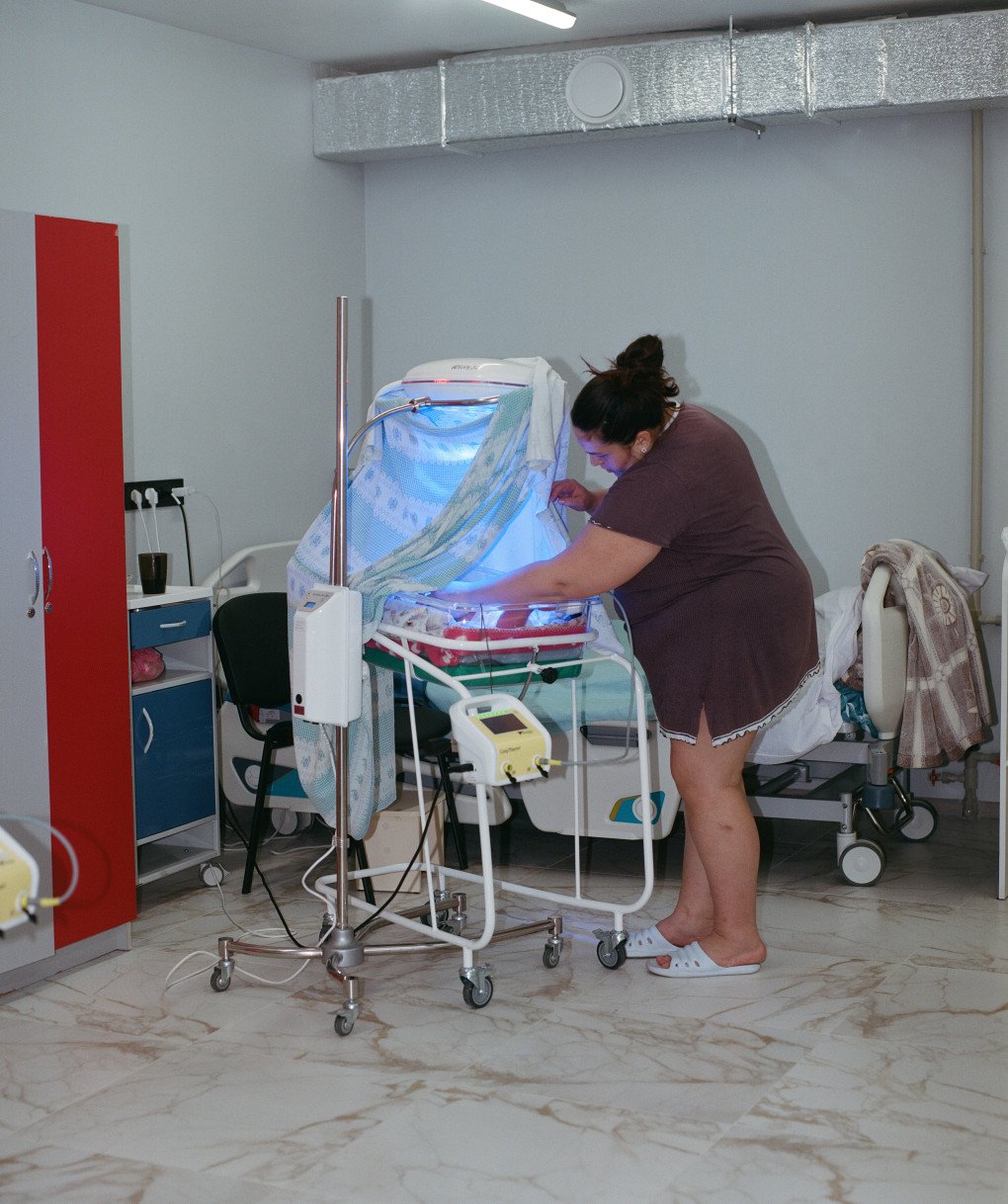
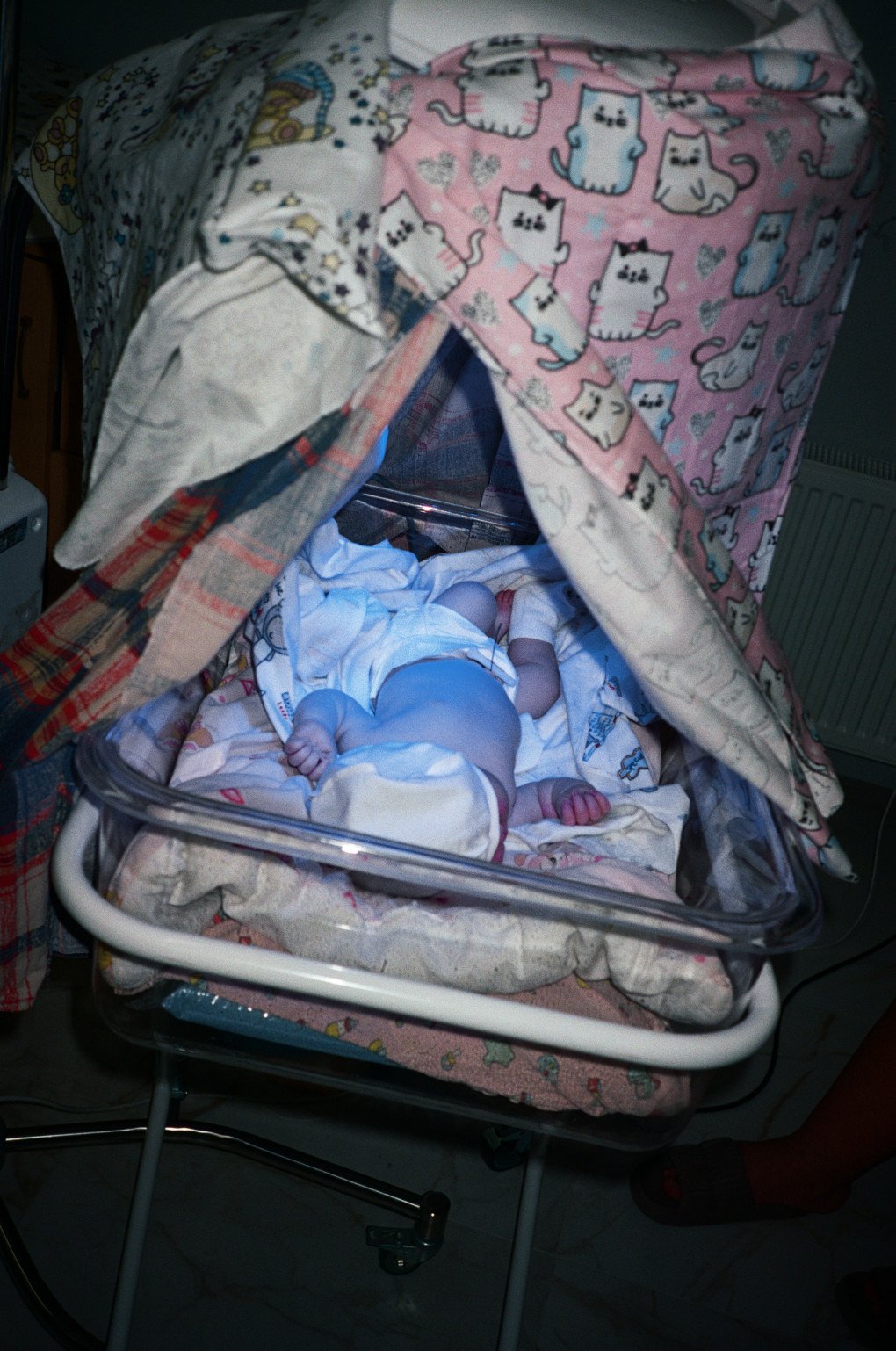
In February alone, nine babies were born at this hospital. Last year, the total was nearly 200, down sharply from three years ago, before Russia’s full-scale invasion, when the hospital recorded 1,300 births. “We’ve kept gynecology and prenatal consultations going. They happen every day—even at 11:50 PM. The work doesn’t stop,” says Hnilitsky.
The fact that women continue to have children in such conditions is a testament to Ukraine’s resilience—and to an undeniable truth: life must, and does, go on. While the reality in Kherson may seem unimaginable to outsiders, for residents here, dodging bombs and drones has become part of daily life.
“There are airstrikes nearly every Sunday,” says Hnilitsky. “It’s not just about having a shelter—it’s about being ready. The generators have to be set up properly, there are backups in place. Everyone here knows the drill.”
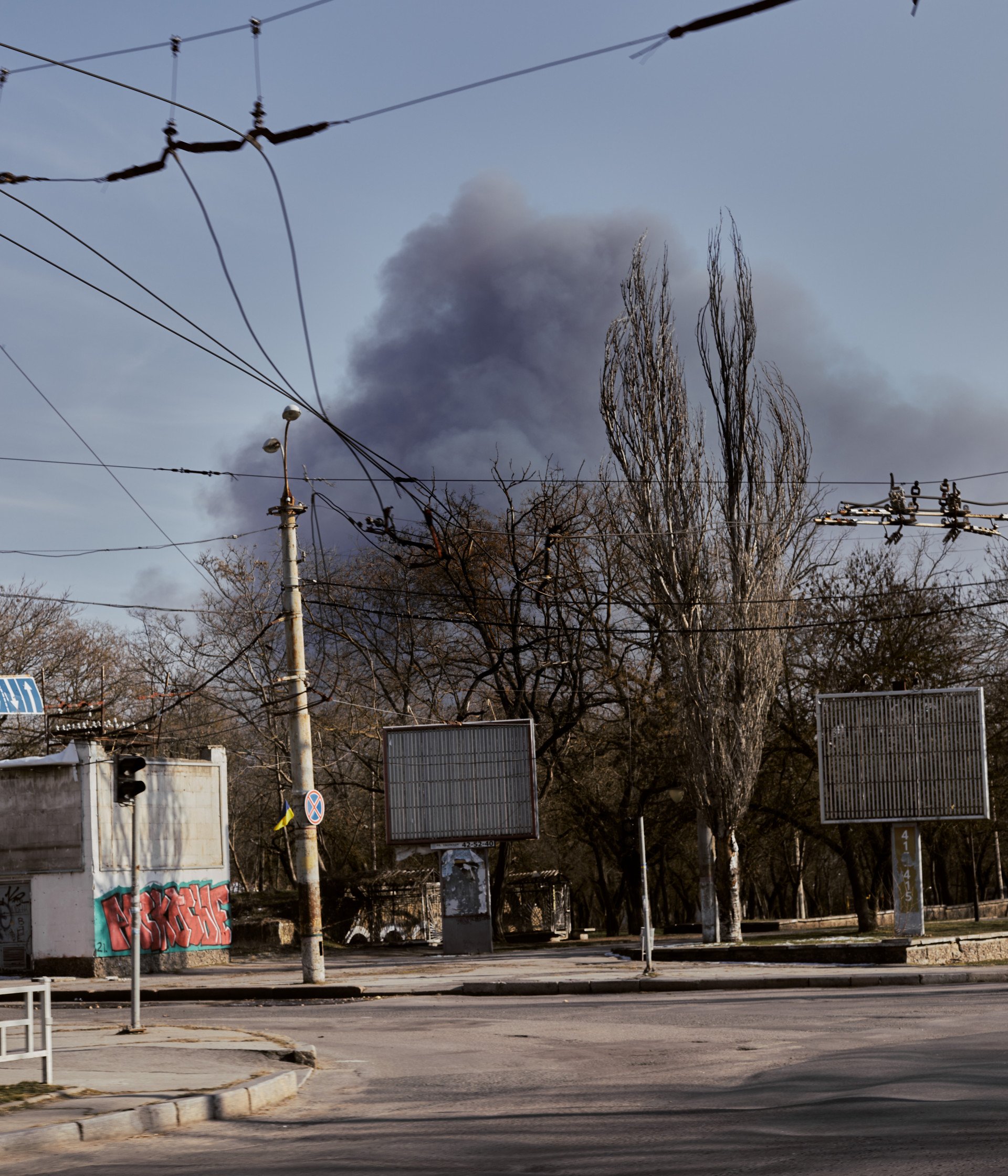
Because Russia targets healthcare facilities and workers, ambulances have also become targets. One expectant mother died, the doctor tells us, because an ambulance couldn’t reach her in time due to heavy shelling.
To help hospital staff move safely around the city—delivering essentials like blood samples—a UK-based charity called Mission Ukraine has provided a vehicle for the midwives. The car is intentionally unmarked and designed to look like a civilian vehicle, so it’s less likely to be targeted by drones.
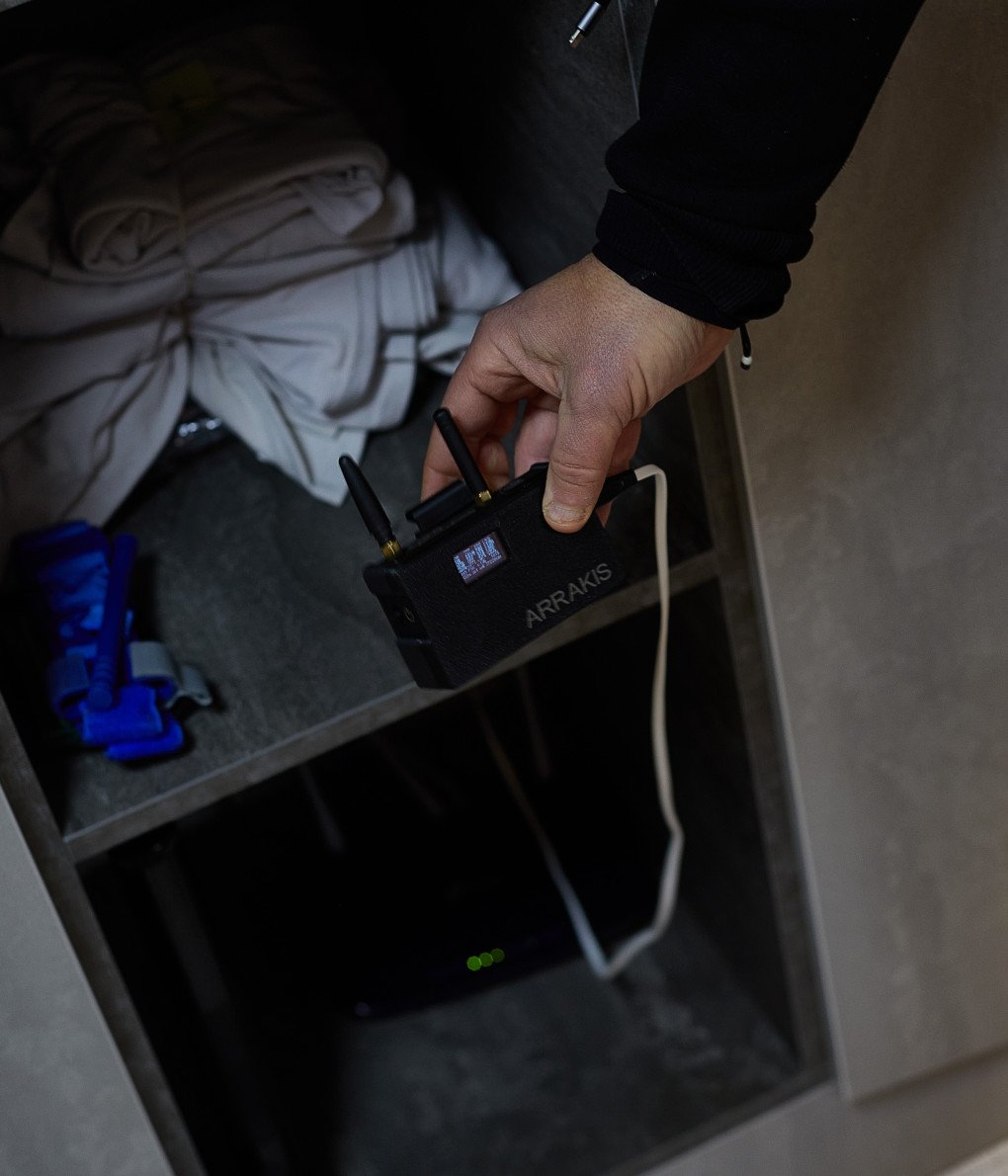
Twice per week, hospital staff drive across the city to deliver lab tests. Blood tests are critical when complications arise, such as fever or suspected tuberculosis. “I don’t call an ambulance—it’s a target,” one nurse explains. “I go quietly, like a civilian.”
She recalls a 5 a.m. ambulance call that nearly ended in tragedy. When the ambulance left the hospital to retrieve the patient, it came under fire. “Luckily,” she says, “the doctor used his private car and got the patient there.”
Even commuting to and from work carries risk. Hnilitsky describes one harrowing moment outside his home: “Five drones buzzed over me,” he says. “I waited until they flew off, then jumped in the car and drove away.”
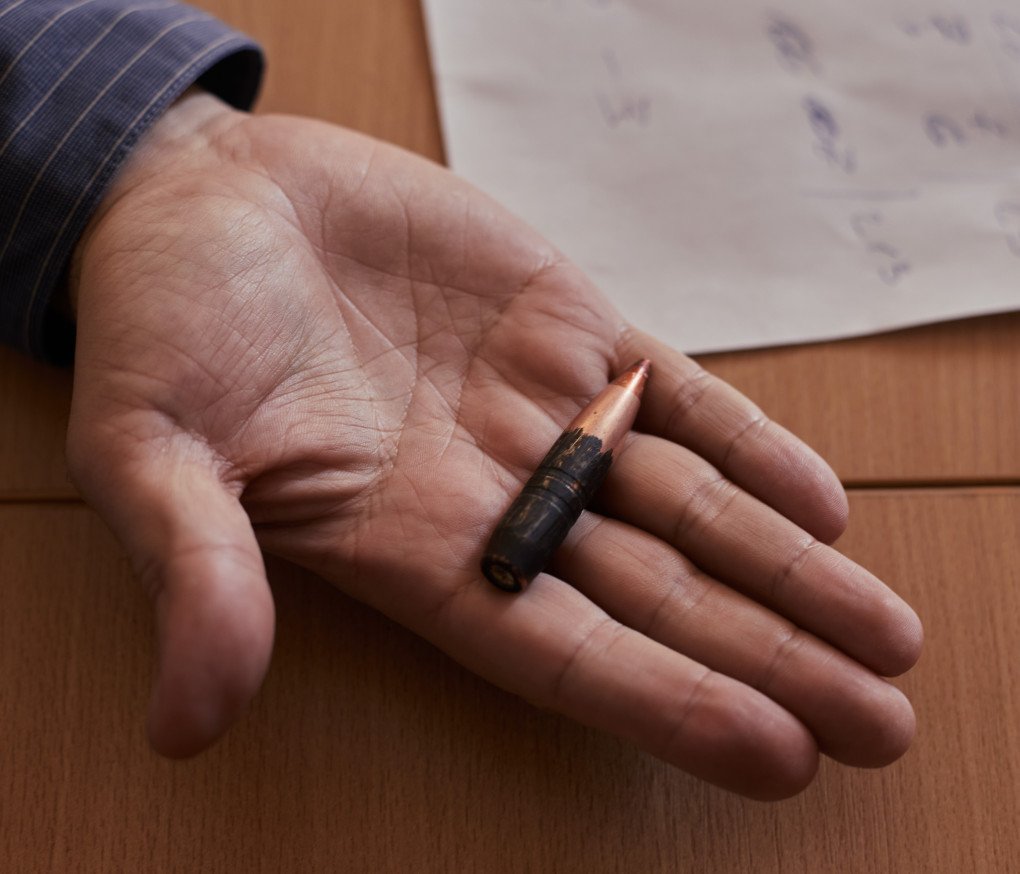
Charitable acts and grassroots support
Rose Cecil, a volunteer with the UK-based charity Mission Ukraine, with the help of two other volunteers, drove the donated vehicle more than 36 hours from the UK to the southeastern tip of Ukraine.

This isn’t her first mission. For nearly three years, Mission Ukraine has been delivering 4×4s primarily to Ukraine’s frontline medics. Mission Ukraine converts second-hand 4×4s into medical evacuation vehicles in their engineering workshop in southern Ukraine.
The cars, from their purchase point in UK, through conversion, to putting the keys in the hands of the medics in Ukraine, cost a total of $6,500. They are donated by private individuals and driven into Ukraine either by their donors or by other volunteers.
Stories like this can be found all over Ukraine, small acts of kindness that have an outsized impact. Grassroots charities have surged in number and influence since the war began, often stepping in where larger organizations are slowed by insurance issues and bureaucratic red tape.
While peace talks and ceasefires are debated in distant capitals, the reality in frontline cities like Kherson is far different.
“Honestly, I understand when Americans talk about honor,” says the Hnilitsky, “But what is Putin offering? Lies.”
He recalls the early days of the war, when he and his colleagues carried the wounded for five kilometers through minefields.
“Doctors here had to fight to save lives while the world claimed nothing was happening,” he says. “They were writing ‘car accident’ on medical records—because no one wanted to admit it was war.”
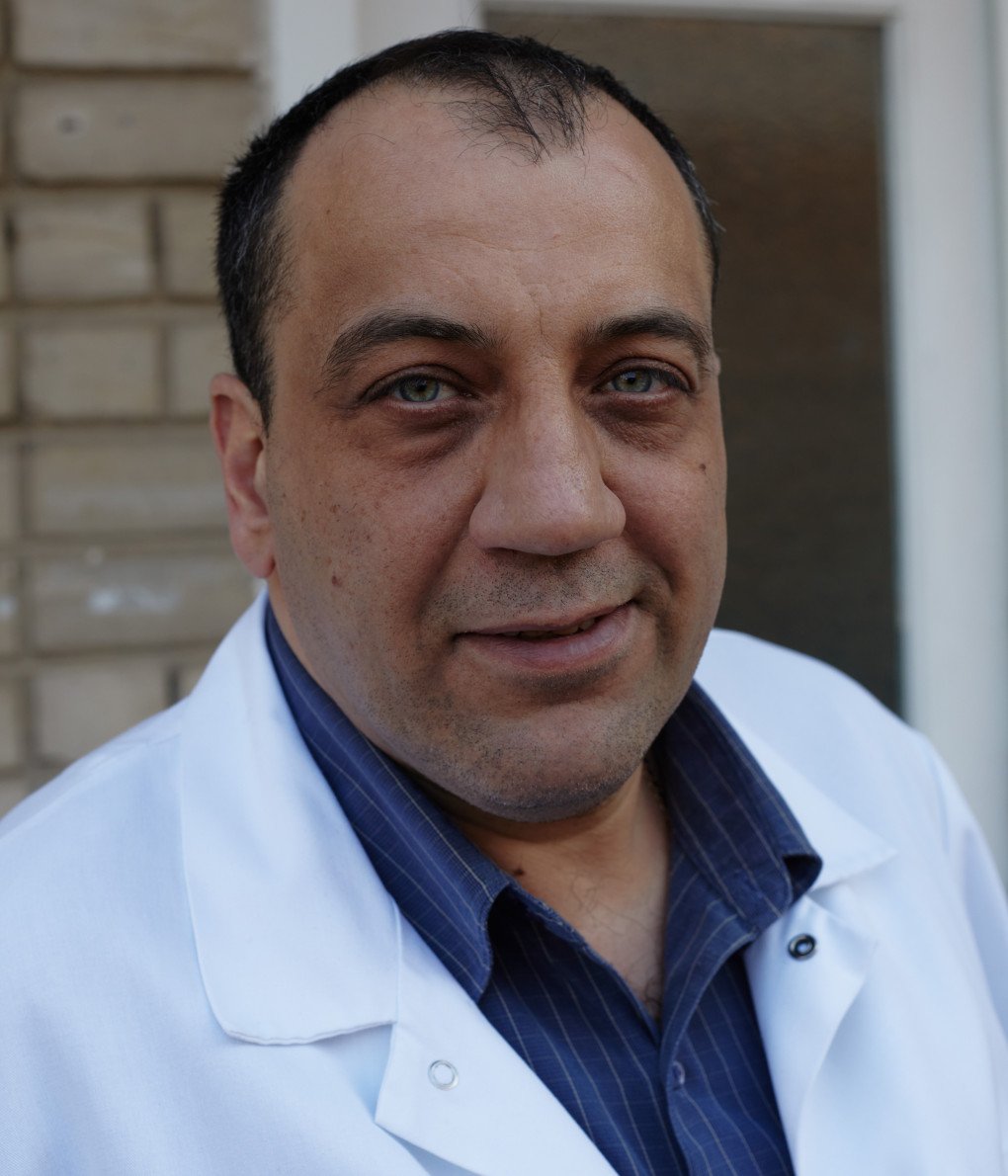
Dr. Hnilitsky embodies the quiet bravery of Ukrainian medical workers, and his story reflects the broader courage of residents in frontline cities like Kherson.
The city itself is unique– it remains a functioning urban center despite being less than five kilometers from active Russian positions. Thanks to the natural barrier of the Dnipro River, life continues, and babies are born in a way that’s no longer possible in other parts of the front.
“Every person here is strong,” Hnilitsky says, “People in Kherson and Mykolaiv carry on with pride.”
-fca37bf6b0e73483220d55f0816978cf.jpeg)
-0666d38c3abb51dc66be9ab82b971e20.jpg)

-29a1a43aba23f9bb779a1ac8b98d2121.jpeg)

-f88628fa403b11af0b72ec7b062ce954.jpeg)
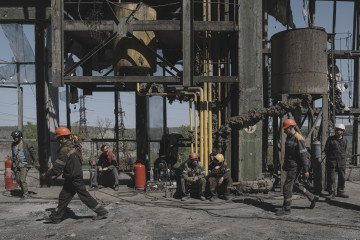
-24deccd511006ba79cfc4d798c6c2ef5.jpeg)

-73e9c0fd8873a094288a7552f3ac2ab4.jpg)